How to Make Curves Safer: High Friction Surface Treatment One of Many Options
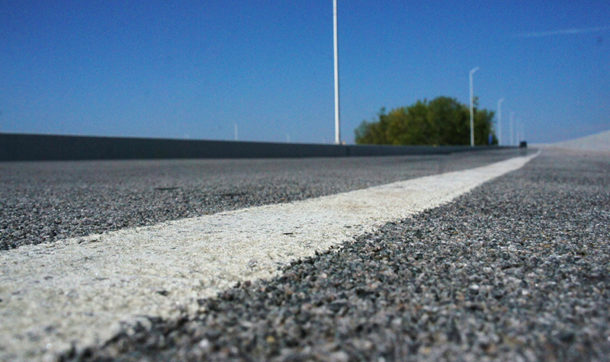


By Phillip Verville III, PE, and William Roth, PE
Traveling down a straight stretch of highway generally is not a high-risk endeavor. Throw in a curve and some rain or snow, though, and your chances of things going sideways increase dramatically.
Road and bridge designers have a long list of ways they can increase motorists’ ability to negotiate a curve safely, ranging from signage to lateral slope to redesigning a curve to make it more gradual. A relatively new tool that is considerably less expensive than redesigning the geometry of a curve is high friction surface treatments (HFST).
HFST Like Driving on Sandpaper
HFST involves using epoxy or another polymer resin binder to stick a thin layer (usually less than a quarter-inch) of specially engineered, durable, high friction aggregates (typically calcined bauxite) on top of existing pavement. This provides long-lasting skid resistance on pavement that otherwise is susceptible to wear and polishing that make the road more slippery, especially when wet or coated with ice or snow. Think of it as driving on sandpaper.
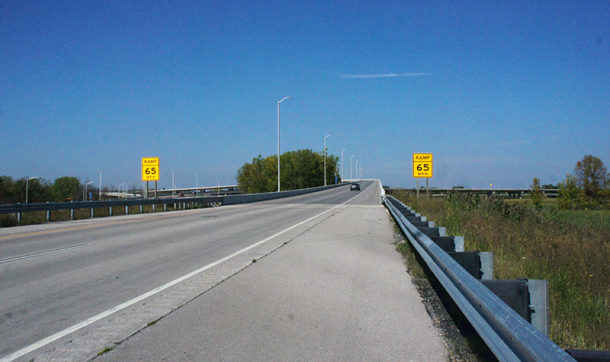
The treatment is suitable for curves (especially curved bridges, which ice up faster than surrounding stretches of roadway) and steep grades and has been installed in at least 17 states. California, Georgia, Kentucky, and Pennsylvania each reported having 100 or more installations of HFST, according to a report published by the Minnesota DOT, which is studying the safety option. Other states with HFST installations are Alaska, Illinois, Indiana, Iowa, Michigan, New Jersey, New York, Ohio, South Carolina, South Dakota, Tennessee, Texas, and Wisconsin.
Dramatic Drop in Crashes
Kentucky’s HFST efforts have delivered total crash reductions of 78%, with wet-weather-related crash reductions of 85%, according to the Wisconsin DOT. In Wisconsin, installing HFST on the two-lane west-to-north ramp on the busy Marquette Interchange in Milwaukee took the crash rate from an average of 79 per year during the three previous years to a staggering two crashes in the first year after HFST application, according to Crossroads, a publication of the Wisconsin Transportation Information Center.
Typical HFST costs have ranged from $25 to $35 per square yard, according to this Federal Highway Administration FAQ. This comes in significantly lower than a complete redesign of the geometry of a curve to make it more gradual. Snow plowing operations have not been shown to damage the treatments, according to several articles, including a USA Today report regarding the Wisconsin I-41 HFST treatment.
While not involved directly in the HFST aspects of the projects, Ayres Associates projects in Brown County, Wisconsin, that have gotten HFST treatments or are being treated currently include three structures on the I-41/I-43 Interchange, bridges on I-41 over Duck Creek, and bridges on the I-41/STH 29 Interchange. Most of these are curved structures.
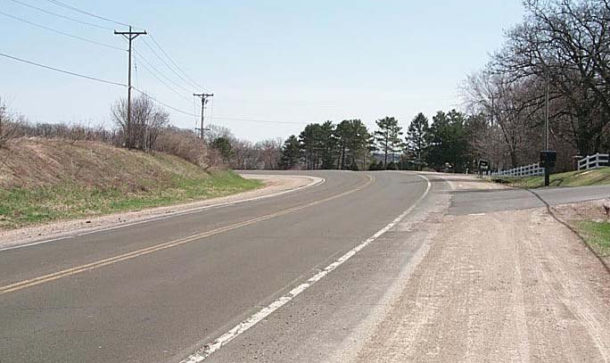
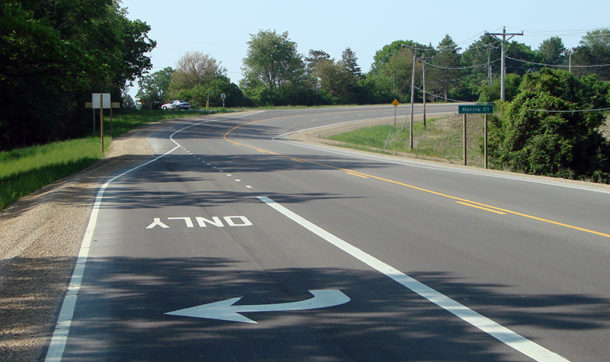
16 More Ways to Improve Curve Safety
In addition to this promising technology, roadway designers have a long list of features they can design into – or out of – a curve to make it safer. Listed roughly in order from least expensive to most expensive, they are:
- Signage and/or delineators. A high-accident curve could benefit from improved signage approaching and at the curve, as well as reflectors delineating the road to guide drivers around the curve at night.
- Shoulder widening.
- Pavement grooving to increase friction.
- Adding rumble strips along the shoulders and/or centerline.
- On the inside of sharp curves, removing sight obstructions close to the shoulder that interfere with driver sight distance, such as hill cut embankments, large signs, and vegetation.
- Superelevation correction. This refers to banking the pavement around the curve, such that the entire roadway slopes down from the outside of the curve to the inside. This generally ranges from a 2% to 6% slope, depending on the posted speed and the curve’s radius (tight vs. gradual). Steep curve slope can be undesirable in the winter. Over the decades, the Wisconsin DOT changed the maximum cross slope in curves from 10% to 8% and then from 8% to the current 6%. Vehicles traveling slowly around a steeply banked curve in icy conditions are at risk of having gravity pull them down the lateral slope, potentially into traffic in the oncoming lane.
- Raising the shoulder on the outside of the curve to match the slope of the adjoining lane. A shoulder banked down on the outside curve could cause a surprised driver to overcorrect.
- Slope flattening. This is a different approach to the same problem and refers to the flattening of the roadway side slope adjacent to the shoulder. If the pavement is banked steeply all the way to its outer edge, any vehicle going off the pavement encounters a destabilizing, sudden transition from banked pavement to less banked shoulder, raising the chance of a rollover.
- Curve reconstruction. This involves redesigning and reconstructing the curve to make it larger (more gradual) and/or redoing the superelevation. This is typically the most expensive option.
- Another curve redesign to improve safety is to move lane drops out of sharp curves. An example of a lane drop is where two lanes are reduced to one and traffic in the lane that ends must merge into the remaining lane. Changing lanes at the same time as negotiating a curve adds unnecessary complexity to the driver’s steering movement.
- Moving intersections out of curves is another beneficial redesign because some drivers who are stopped on the side road have trouble judging the distance of approaching vehicles on the mainline. If the intersection cannot be moved outside the curve, the next best thing is to reduce its skew angle with the mainline if it is on the inside of the curve because it is difficult for some drivers to sharply turn their head at a high-angle intersection.
- Compound curves. Except for loop ramps, it is highly undesirable to have a compound curve where the driver first encounters a gentle curve and then is surprised by a much sharper one.
- Curves near hills. Avoid having the start of a curve “hidden” from approaching drivers where the curve comes up abruptly right after the crest of a hill. Also avoid a steep downhill grade for the approach to a sharp horizontal curve, especially where there is a large dropoff next to the road.
- Short curves that are sharply banked in the middle. Avoid these, as they ride very poorly, like a rollercoaster.
- Avoid a sharply banked curve at a signalized four-leg intersection with a high-speed side road that has a through movement on green.
- Avoid steep banking where the road is also used by pedestrians and bicycles.
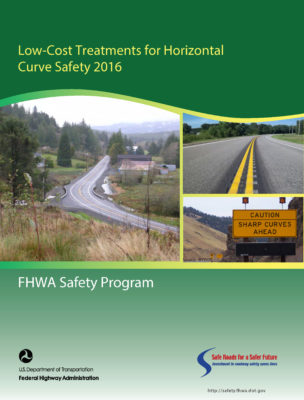 The Federal Highway Administration’s 2016 Low-Cost Treatments for Horizontal Curve Safety report covers many of these factors and more.
The Federal Highway Administration’s 2016 Low-Cost Treatments for Horizontal Curve Safety report covers many of these factors and more.
Phillip Verville III, PE, works as a project manager and roadway engineer to complete transportation design and construction projects. He has experience in highway and municipal projects, including highway, bridge, and storm sewer facilities. His responsibilities include state and county highway design, urban street design, and construction observation. William Roth, PE, has been involved in the design and construction of various street, highway, and bridge projects for Ayres Associates since 1988. His responsibilities include design and plan development of major roadways, bridge replacements, and reconstruction projects.

Post a comment: